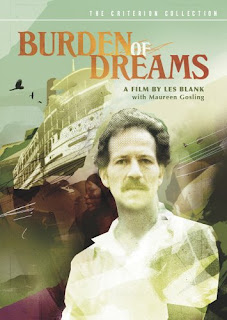I believe the common denominator of the Universe is not harmony, but chaos, hostility and murder. (Grizzly Man, 2005)
If you switch on television it's just ridiculous and its destructive. It kills us. And talk shows will kill us. They kill our language. So we have to declare holy war against what we see every single day on television. Commercials and – I think there should be real war against commercials, real war against talk shows, real war against "Bonanza" and "Rawhide", or all these things. (Werner Herzog Eats His Shoe, 1980)
There are deeper strata of truth in cinema, and there is such a thing as poetic, ecstatic truth. It is mysterious and elusive, and can be reached only through fabrication and imagination and stylization. (Minnesota Declaration, 1999)
Life in the oceans must be sheer hell. A vast, merciless hell of permanent and immediate danger. So much of a hell that during evolution some species—including man—crawled, fled onto some small continents of solid land, where the Lessons of Darkness continue. (Minnesota Declaration, 1999)
The kinds of landscape I try to find in my films...exist only in our dreams. For me a true landscape is not just a representation of a desert or a forest. It shows an inner state of mind, literally inner landscapes, and it is the human soul that is visible through the landscapes presented in my films. (Herzog on Herzog, 2002)
Coincidences always happen if you keep your mind open, while storyboards remain the instruments of cowards who do not trust in their own imagination and who are slaves of a matrix... If you get used to planning your shots based solely on aesthetics, you are never that far from kitsch. (Herzog on Herzog, 2002)
It is my firm belief, and I say this as a dictum, that all these tools now at our disposal, these things part of this explosive evolution of means of communication, mean we are now heading for an era of solitude. Along with this rapid growth of forms of communication at our disposal— be it fax, phone, email, internet or whatever— human solitude will increase in direct proportion. (Herzog on Herzog, 2002)
KINSKI ON HERZOG
Herzog is a miserable, hateful, malevolent, avaricious, money-hungry, nasty, sadistic, treacherous, cowardly creep...he should be thrown alive to the crocodiles! An anaconda should strangle him slowly! A poisonous spider should sting him and paralyze his lungs! The most venomous serpent should bite him and make his brain explode! No—panther claws should rip open his throat—that would be much too good for him! Huge red ants should piss into his lying eyes and gobble up his balls and his guts! He should catch the plague! Syphilis! Yellow fever! Leprosy! It's no use; the more I wish him the most gruesome deaths, the more he haunts me. (Kinski Uncut, 1996)

His speech is clumsy, with a toad like indolence, long winded, pedantic, choppy. The words tumble from his mouth in sentence fragments, which he holds back as much as possible, as if they were earning interest. It takes forever and a day for him to push out a clump of hardened brain snot. Then he writhes in painful ecstasy, as if he had sugar on his rotten teeth. A very slow blab machine. An obsolete model with a non-working switch— it can't be turned off unless you cut off the electric power altogether. So I'd have to smash him in the kisser. No, I'd have to knock him unconscious. But even if he were unconscious he'd keep talking. Even if his vocal cords were sliced through, he'd keep talking like a ventriloquist. Even if his throat were cut and his head were chopped off, speech balloons would still dangle from his mouth like gases emitted by internal decay. (Kinski Uncut, 1996)
















